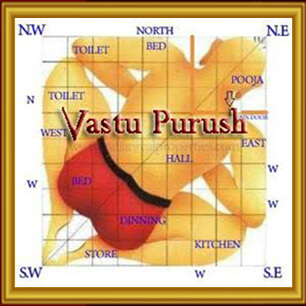HISTORY OF VASTU SHASTRA
In this article, you will get aware of the “History of Vastu Shastra”. Some tips at the end will ensure that you understand this Vastu Shastra more practically
What is Vastu and where did it originate?
According to Indian mythology, Vastu is an Asur (Demon) who prayed to Bramhadev and got His blessings. When Brahmhadev gave him blessings this led to the concept of Vastu and its power came into existence. His power grew to such an extent that he attacked the Devas (Gods) in an attempt to consume their energies. The Devas then asked Bramhadev to help them get rid of him. Brahmhadev gave the Gods this solution, which they should fight against Vastu. During the fight, Vastu was pushed back to Earth and he fell flat on his back with this legs and hands pointing out. Bramhadev then asked the Gods to jump and sit on each organ of Vastu as this will be the only way he can be killed. Bramhadev himself sat on the middle of Vastu, and defeated and killed Vastu. When Vastu asked God, “why are you punishing me? I am the way I am, because you gave me that power, it’s not my fault.” Then in order to compensate the damage done, God made him immortal, and that he will by every human that will ever make a structure on earth. Hence the name ‘Vastu Purush’
Some information regarding Vastu Shastra:-
Vastu Shastra has its origin in Sthapatya Veda which is a part of Atharva Veda. In ancient times, this science was only confined to the architects, known as Sthapathis, and was passed on either verbally or through hand-written monographs. If you talk about Vastu Shastra it is seen even the ancient scriptures like Mahabharata and Ramayana. The architecture of the city of Ayodhya bears a resemblance to the plans mentioned in the Indian architectural text Manasara. Vastu Shastra, its theories, principals are still as valid as yester years. Although the world has become practical and factors like economy, convenience and comfort are given a lot of values, it is very common to blame the Vastu of the structure if anything goes wrong. This is a classic example of proving that no matter how modern you become, the science of Vastu Shastra will always hold true.
Some Designing Tips: -
The times may have changed the type of material to make the structure and the placement in the map may have changed but the five elements of earth, fire, water, air and sky are still the same. Till these remain the same, the application of Vastu Shastra can always be used.


.jpg)

.jpg)
Comments
Post a Comment
If you have any question or doubt, please let me know